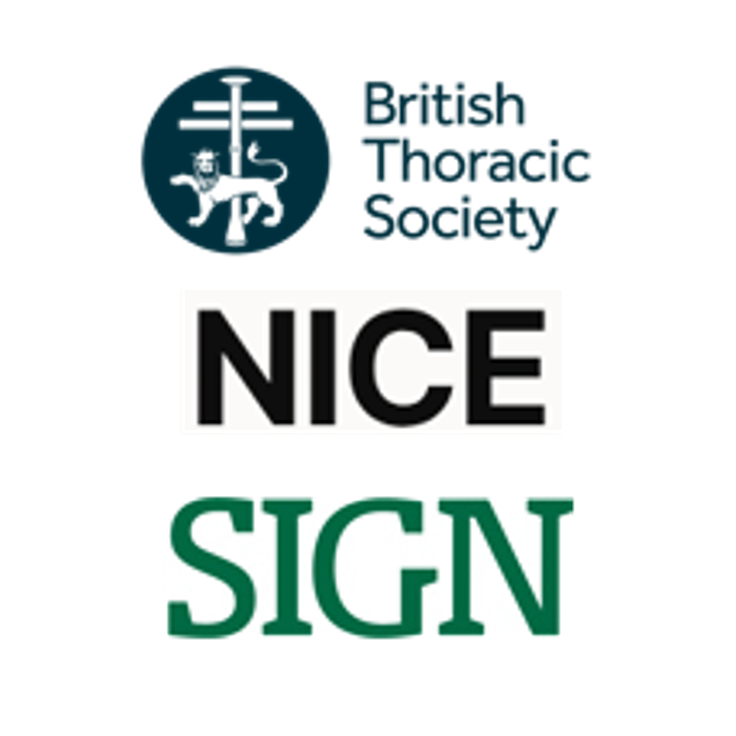
This content is from the BTS/SIGN British guideline on the management of asthma (SIGN 158), 2019.
Emergency departments attending to children with acute asthma should have a nurse trained in paediatrics available on duty at all times and staff familiar with the specific needs of children. Using a proforma can increase the accuracy of severity assessment.
![]()
![]()
Inhaled β2 agonists are the first-line treatment for acute asthma in children aged two years and over.647-650 Assessment of response should be based on accurately recorded clinical observations and repeat measurements of oxygenation (SpO2) (link to what would be table 17 in guideline). Children receiving β2 agonists via a pMDI + spacer are less likely to have tachycardia and hypoxia than when the same drug is given via a nebuliser.531 In children under two who have a poor initial response to β2 agonists administered with adequate technique, consider an alternative diagnosis and other treatment options.
Children under three years of age are likely to require a face mask connected to the mouthpiece of a spacer for successful drug delivery. Inhalers should be actuated into the spacer in individual puffs and inhaled immediately by tidal breathing (for five breaths).
Frequent doses of β2 agonists are safe for the treatment of acute asthma,647-649 although children with mild symptoms benefit from lower doses.650
Two to four puffs of salbutamol (100 micrograms via a pMDI + spacer) might be sufficient for mild asthma attacks, although up to 10 puffs might be needed for more severe attacks. Single puffs should be given one at a time and inhaled separately with five tidal breaths. Relief from symptoms should last 3–4 hours. If symptoms return within this time a further or larger dose (maximum 10 puffs) should be given and the parents/carer should seek urgent medical advice.
Children with severe or life-threatening asthma (SpO2 <92%) should receive frequent doses of nebulised bronchodilators driven by oxygen (2.5–5 mg salbutamol). If there is poor response to the initial dose of β2 agonists, subsequent doses should be given in combination with nebulised ipratropium bromide (Link to what would be 9.8.3). Doses of nebulised bronchodilator can be repeated every 20–30 minutes. Continuous nebulised β2 agonists are of no greater benefit than the use of frequent intermittent doses in the same total hourly dosage.651, 652 Once improving on two- to four-hourly salbutamol, patients should be switched to a pMDI and spacer treatment as tolerated.
Schools can hold a generic reliever inhaler enabling them to treat an acutely wheezy child whilst awaiting medical advice. This is safe and potentially life saving.
Frequent doses up to every 20–30 minutes (250 micrograms/dose mixed with 5 mg of salbutamol solution in the same nebuliser) should be used for the first few hours of admission. Salbutamol dose should be tapered to one to two hourly thereafter according to clinical response. The ipratropium dose should be tapered to four to six hourly or discontinued.
The early use of steroids in emergency departments and assessment units can reduce the need for hospital admission and prevent a relapse in symptoms after initial presentation.598, 599 Benefits can be apparent within three to four hours.
In the acute situation, it is often difficult to determine whether a preschool child has asthma or episodic viral wheeze. Children with severe symptoms requiring hospital admission should still receive oral steroids. In children who present with moderate to severe wheeze without a previous diagnosis of asthma it is still advisable to give oral steroids. For children with frequent episodes of wheeze associated with viruses caution should be taken in prescribing multiple courses of oral steroids.657
Use a dose of 10 mg of prednisolone for children under two years of age, a dose of 20 mg for children aged 2–5 years and a dose of 30–40 mg for children older than five years.
Oral and intravenous steroids are of similar efficacy.600, 658, 659 Intravenous hydrocortisone (4 mg/kg repeated four hourly) should be reserved for severely affected children who are unable to retain oral medication.
Larger doses do not appear to offer a therapeutic advantage for the majority of children.660 There is no need to taper the dose of steroid tablets at the end of treatment.
There is insufficient evidence to support the use of ICS as alternative or additional treatment to steroid tablets for children with acute asthma.604, 661-668
Children with chronic asthma not receiving regular preventative treatment will benefit from starting ICS as part of their long-term management. There is no evidence that increasing the dose of ICS is effective in treating acute symptoms, but it is good practice for children already receiving ICS to continue with their usual maintenance doses.
There is insufficient evidence to support or refute the role of antibiotics in acute asthma, but the majority of acute asthma attacks are triggered by viral infection.458
Initiating oral montelukast in primary care settings, early after the onset of an acute asthma attack, can result in decreased asthma symptoms and the need for subsequent healthcare attendances in those with mild asthma attacks.508
There is no evidence to support the use of nebulised magnesium sulphate, either in place of or in conjunction with inhaled β2 agonists, in children with mild to moderate asthma.609 A subgroup analysis from a large RCT suggests a possible role in children with more severe asthma attacks (SpO2 <92%) or with short duration of deterioration. Further studies are required to evaluate which clinical groups would benefit the most from this intervention.670